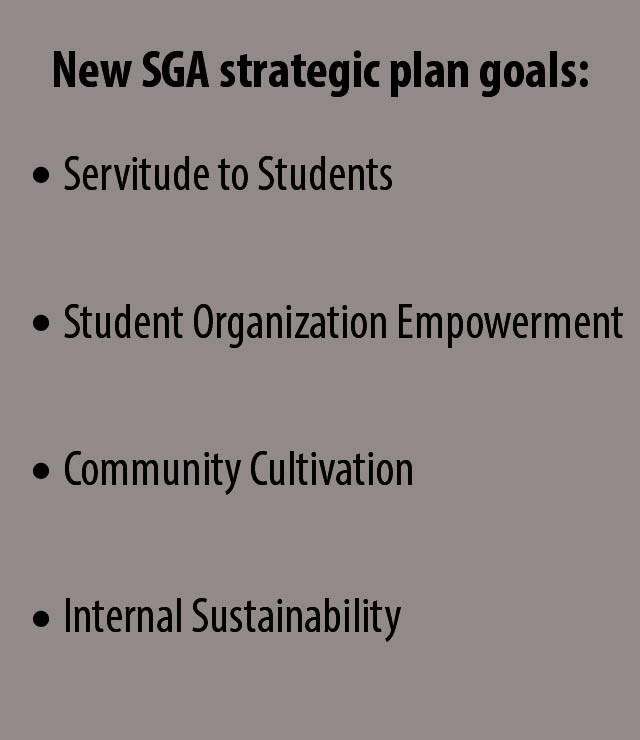
SGA reflects on 2014-2019 strategic plan, looks forward to 2020-2024
The 2020-2024 strategic plan was passed unanimously by the Student Government Association (SGA) at their last meeting on Feb. 5.
After giving the final report on the 2014-2019 strategic plan, Josh Sorbe, SGA President, proposed the new plan.
“I think that we are in a lot better place than we were five years ago, but there’s always room to improve, which is awesome,” Sorbe said.
Sorbe said members of SGA should take a close look at previous plans in order to gain a perspective of where SGA started.
“A lot of the stuff that we take as commonplace that we do in SGA now may not have been commonplace five years ago,” Sorbe said.
The new plan is comprised of four goals: servitude to students, student organization empowerment, community cultivation, and internal sustainability.
Servitude to students was very important to list as the first goal, because that’s the first goal and initiative of SGA, Sorbe said.
The first goal in the new plan boils down many of the objectives from goals one and two from the 2014-2019 strategic plan. Overall, the objectives are to communicate with the student body, increase attendance at USD events and advocate for student concerns.
Michelle Novak, SGA senator, said the plan gives SGA a vision when it comes to what they should do for students.
“Sometimes we get caught up in all these fiscal guidelines and things like that, and we have to refocus ourselves on issues that are really important for our students,” Novak said.
The second goal, student organization empowerment, is the biggest difference between the two plans, Sorbe said.
“As the pocketbook for student organizations, I felt it was important for our second goal to reflect that,” Sorbe said. “This year we heard a lot about utilization rates and how organizations come and ask for this money in April and have all these great ideas and plans but we look at utilization rates at the end of the fiscal year a lot of them didn’t use their money.”
To combat this issue, SGA plans to increase usage of USD Involved as a “one-stop shop” for student organizations.
Overall, the second goal aims to maintain empowerment throughout the year and increase accessibility to resources for student organizations.
Community cultivation, the third goal, refers to strengthening relationships not just on campus, but also in the Vermillion area.
Sorbe said reaching out to university committee appointees is vital as they are “a huge branch between students and administrators.”
Finally, the fourth goal, internal sustainability, works to retain progress made with student organizations and within SGA.
“Every year going from administration to administration, student organizations actually have very high turnovers and that’s just the nature of college,” Sorbe said.
Missing from this plan is the goal for diversity and inclusiveness that was on the 2014-2019 plan.
Sorbe said the absence is because it fell into the first goal regarding students.
“Just based on listening sessions, we think that we’ve made substantive progress on this,” Sorbe said.
Additionally, Sorbe said he hopes the next administration will add a line to each piece of legislation addressing which goal it aligns with.
Macy Halverson, SGA senator, said the strategic plan allows for SGA to have a set list of rules and policies to look forward to no matter if it’s a good or bad administration.
“It’s important that you have a set bottom line list of things throughout the administrations to make sure things are going in the right direction,” Halverson said.


